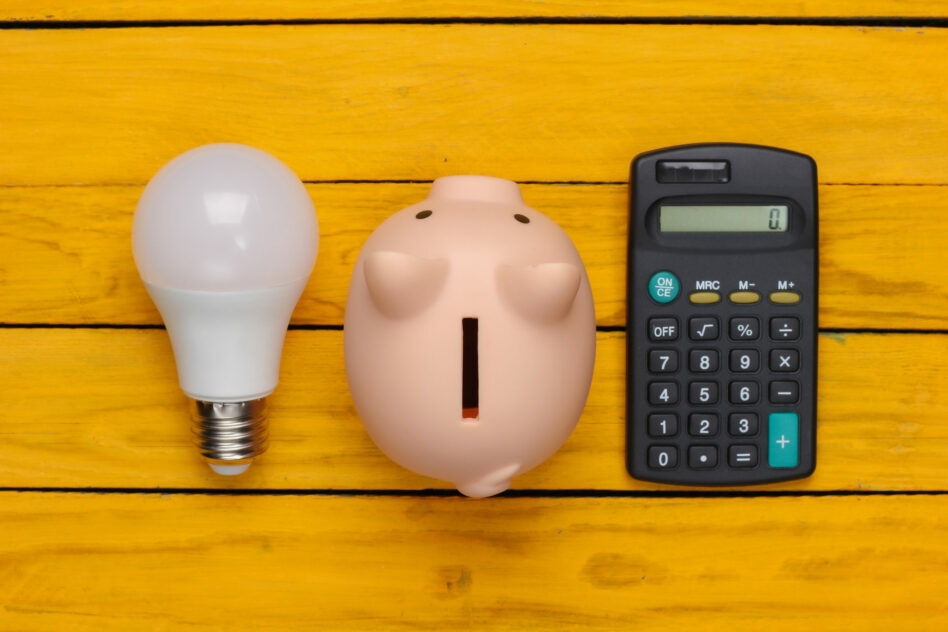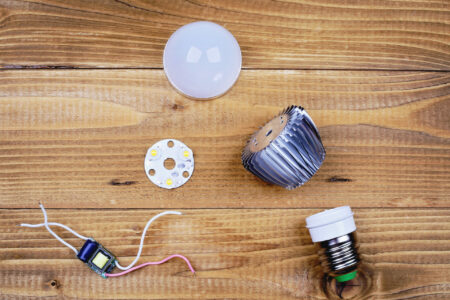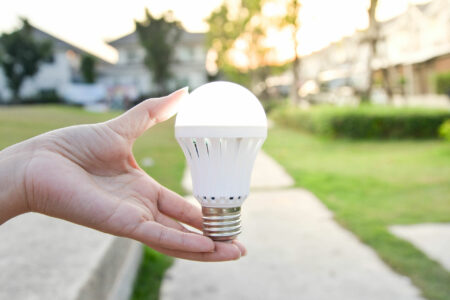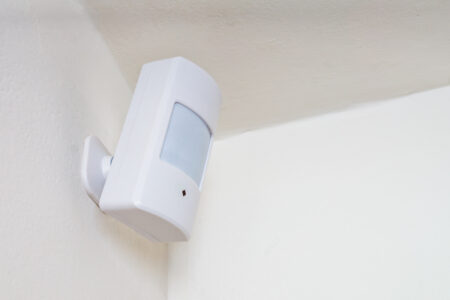If you’re thinking about switching to LED lighting, one of the questions you must have in mind is, if LED lights use a lot of electricity? We answer that question in great detail in this post, so stick around!
Are LED Lights Energy Efficient?
Yes. LED lights are highly energy-efficient and can save you significant amounts of energy compared to traditional lighting technologies such as incandescent and fluorescent lights.
LEDs consume less electricity because they convert more electrical energy into light rather than heat, which is wasted energy. This translates into notable savings on your energy bill over time.
So, switching to LED lights is a great way to save energy and reduce your environmental impact while saving money in the long run.
How Do LED Lights Save Energy?
Now that we know that LEDs save energy, let’s find out how these types of lights do it.
1. Efficiency
LED lights are much more efficient at converting electricity into light than traditional lighting technologies like incandescent and fluorescent lights.
This is because LED lights produce light through a process called electroluminescence, which doesn’t produce as much heat as other lighting technologies.
As a result, LED lights waste less energy on heat production.
2. Directionality
LED lights are also more directional than other lighting technologies. Instead of emitting light in all directions, they emit light in a specific area.
This reduces the need for reflectors and diffusers, which can waste energy by directing light in unwanted directions.
3. Long Lifespan
They have a longer lifespan than traditional lighting technologies. They can last up to 50,000 hours or more, compared to incandescent lights, which typically last only 1,000 hours.
This means you’ll need to replace LED lights less frequently, reducing energy consumption and cost.
4. Instant On
LED lights turn on instantly, unlike other lighting technologies which may take a few seconds to reach full brightness.
This means that you don’t have to wait for the light to warm up, reducing the amount of energy wasted during start-up.
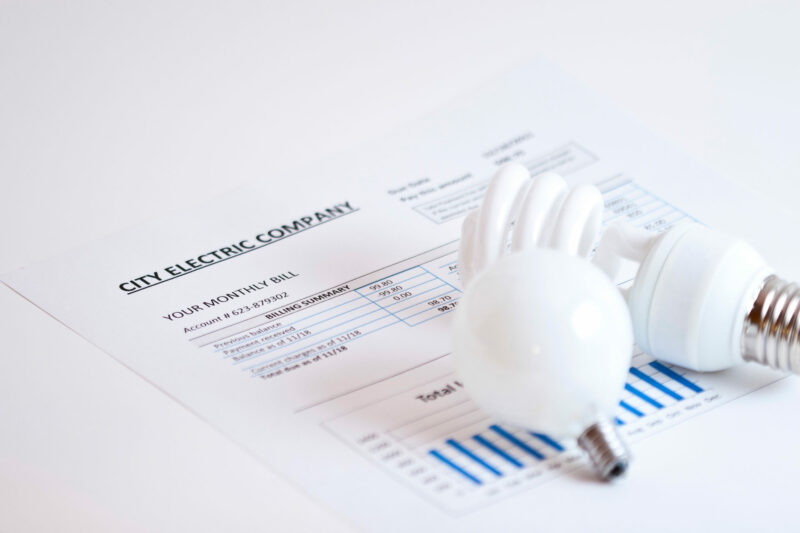
Does Leaving LED Lights on Consume a Lot of Electricity?
While LED lights are energy-efficient, they do consume electricity when they are on, just like any other electrical device. However, the amount of electricity they will use if left on will be much less than if you had left on an incandescent or fluorescent light for the same amount of time.
In general, it’s a good practice to turn off lights when you’re not using them, even if they’re LED lights, though using LED lights alone helps reduce your energy consumption and electricity bill.
How Much Electricity Do LED Lights Use?
The amount of electricity that an LED light uses depends on several factors:
- Wattage of the light
- Number of hours it is left on
- Cost of electricity in your area
For example, an LED light that consumes 10 watts and is left on for 10 hours per day would use 100 watt-hours of electricity per day (10 watts x 10 hours = 100 watt-hours).
If you use this light every day for a month, it would consume approximately 3 kilowatt-hours (kWh) of electricity per month ((100 watt-hours x 30 days) ÷ 1000) = 3 kWh.
Find the amount per kWh you pay through your local energy provider or your bill, then multiply it by your kWh usage.
The actual amount of electricity used by an LED light may vary depending on several factors, such as the efficiency and quality of the bulb and the conditions in which you’re using it.
Difference Between LED Lights and Incandescent Bulbs
Here are the key differences between LED lights and incandescent bulbs:
1. Efficiency
LED lights are way more energy-efficient than incandescent bulbs. In fact, LED lights can use up to 75% less energy than incandescent bulbs to produce the same amount of light.
A traditional incandescent light bulb with the same brightness as a 10-watt LED light would consume about 60-100 watts of electricity.
2. Lifespan
LED lights have a much longer lifespan than incandescent bulbs—25 times longer, to be exact. So, you won’t be replacing them as frequently as you would with incandescent bulbs.
3. Heat Output
Incandescent bulbs produce a significant amount of heat. This heat is a waste of energy and can even pose a fire risk.
LEDs, on the other hand, produce little heat, making them a safer and more efficient lighting option.
4. Color Temperature
LED lights come in a range of color temperatures, from cool white to warm white. This feature isn’t available in incandescent bulbs that only produce a warm, yellowish light.
The color attribute of LED lights allows a wider range of lighting effects. It can even be customized to suit different needs and preferences.
5. Environmental Impact
LED lights have a lower environmental impact than incandescent bulbs. They use less energy, which reduces greenhouse gas emissions and other environmental impacts associated with energy production.
LED lights also contain fewer hazardous materials than incandescent bulbs, which makes them easier to dispose of safely.
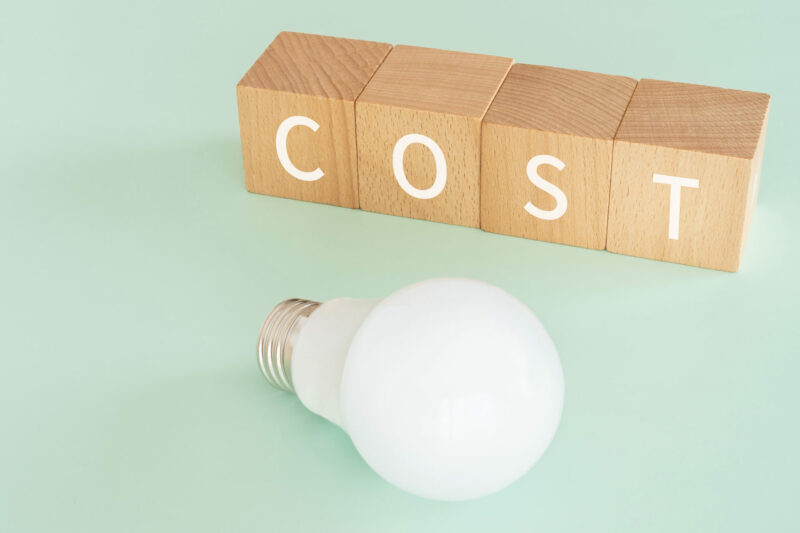
6 Tips to Save on Energy Costs
Make the most of LED lights and reduce your energy consumption and costs by following these energy-saving tips:
1. Switch to LED lights
If you haven’t already, consider switching all your light bulbs to LEDs. Aside from saving you money on your electric bill, you won’t have to replace them often!
2. Use Dimmer Switches
You can use LED lights with dimmer switches, which allow you to adjust the brightness of the light to suit your needs.
This tool can help you save energy and create a more comfortable and customized lighting experience.
3. Use Motion Sensors or Timers
Installing motion sensors or timers for your LED lights can help you save energy by turning the lights off when they’re not needed.
This recommendation can be particularly useful for outdoor lights or lights in rooms that aren’t frequently used.
4. Choose the Right Color Temperature
LED lights come in a range of color temperatures, from cool white to warm white. Choosing the right color temperature for each room can help you create the right ambiance and reduce the need for additional lighting.
5. Turn Off the Lights When Not in Use
This is a simple tip that can help you save energy and money. Make sure to turn off the lights when you leave the room, and encourage others in your household to do the same.
6. Install LED Bulbs in Fixtures with Multiple Bulbs
If you have a fixture with multiple bulbs, consider replacing all of the bulbs with LED bulbs.
This ensures that all bulbs are using the same amount of energy. This will also help you maximize your energy savings.
5 Maintenance Tips to Maximize Your LED’s Lifespan
Proper maintenance of LED lights can help ensure their longevity and optimal performance.
If you want to get the most out of your LED lights and avoid expensive repairs, follow these maintenance tips:
1. Clean the Bulbs Regularly
Cleaning your bulbs regularly is a great way to keep them in good shape and prolong their life. Here’s how to clean the bulbs in your home:
Switch the Power Off
First, turn off all the lights in the room you’re working in. You should also make sure that no one is standing in front of any of the light fixtures you’re cleaning.
Wipe Down the Bulb
Use a soft cloth to wipe down the glass of each bulb. If there are fingerprints or smudges on them, use window cleaner or vinegar to remove them before wiping them down with a damp cloth.
Wipe It Dry
Wipe down each bulb with a dry cloth or paper towel so that it’s nice and clean.
2. Keep Them Away from Humidity
Humidity can wreak havoc on your light bulbs! It will cause them to corrode more quickly than normal, which means you’ll have to replace them sooner than expected.
Try storing your bulbs in a dry location where they won’t get wet from rain or snowstorms coming through your backyard window.
3. Inspect Regularly
LED lights are known for their durability, but that doesn’t mean you can stop inspecting them. A quick glance around your home or office will tell you if it’s time for a replacement.
This will allow you to catch any problems early and save yourself some time and money down the line! If you notice any of the following, those lights are probably ready for a change:
- The light bulbs have gotten dimmer over time
- The lights have burnt out
- You’ve seen visible signs of damage
4. Install Surge Protection
If you live in an area prone to power surges, it’s a good idea to ask your electrician to install a surge protection into your home’s electrical system.
Surge protectors will help protect your LED lights from power surges and lightning strikes that can damage the circuits in your fixture and shorten its lifespan.
5. Use Compatible Switches
Some dimmer switches aren’t compatible with LED bulbs. If you’re using an old switch that’s not rated for LEDs, you may get a flickering effect as your lights cycle through various colors.
This can be annoying, but it’s also a safety hazard if you don’t replace the switch.
